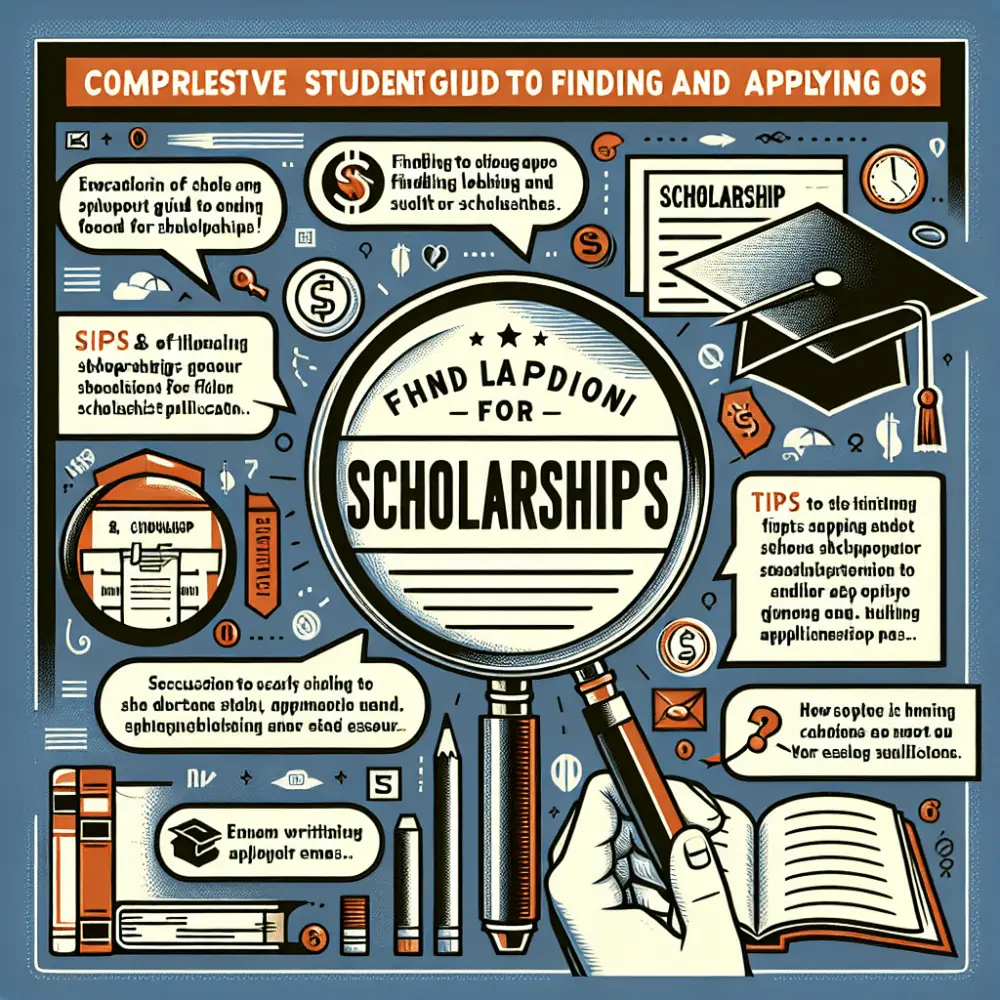
Scholarships can substantially alleviate the financial burden of higher education. Whether a student is aiming for a college degree, a vocational certificate, or a graduate program, scholarships provide an invaluable opportunity to reduce or even eliminate tuition fees. This guide aims to help students navigate the complex world of scholarships, providing practical steps for finding and applying for these financial aids.
Understanding Scholarships
Scholarships are financial awards given to students based on various criteria such as academic achievement, extracurricular involvement, financial need, or specific talents. Unlike loans, scholarships do not need to be repaid, making them an attractive option for students.
Types of Scholarships
- Merit-Based Scholarships: Awarded to students based on academic, artistic, or athletic accomplishment.
- Need-Based Scholarships: Offered to students who demonstrate financial need.
- Subject-Specific Scholarships: Designed for students pursuing a particular field of study.
- Student-Specific Scholarships: Target specific groups such as minorities, women, or military families.
- Location-Based Scholarships: Available to students from particular regions or who plan to study in a certain area.
- Employer-Sponsored Scholarships: Provided by companies to employees or their dependents.
Finding Scholarships
Start Early
Beginning the search early allows students sufficient time to explore a variety of scholarships and prepare strong applications. Ideally, the search should start a year before the student plans to begin their program.
Utilize Online Resources
Several websites aggregate scholarship opportunities, making it easier for students to find suitable scholarships. Popular sites include:
- Fastweb.com
- Scholarships.com
- Cappex.com
- Chegg.com
- CollegeBoard.org
Students should create accounts on these platforms and complete profiles that match them to relevant scholarships.
Check Local Sources
Local community organizations, businesses, and educational institutions often offer scholarships. Resources include:
- High School Guidance Counselors: They can provide information on local and national scholarships.
- Local Libraries: Often have directories and resources about scholarships.
- Community Organizations: Groups like Rotary Clubs, Elks Lodges, and local businesses frequently offer scholarships.
Contact School Financial Aid Offices
Financial aid offices at prospective colleges and universities often have lists of scholarships and institutional grants available to students. They can provide information on eligibility and application processes.
Use Social Media and Networking
Social media platforms, especially LinkedIn, can be excellent resources for scholarship information. Joining scholarship groups or following organizations that offer scholarships can lead to discovering valuable opportunities. Additionally, networking with family, friends, and alumni can uncover less-publicized scholarships.
Preparing Scholarship Applications
Gather Necessary Documents
Applicants often need various documents such as:
- Transcripts: Academic records from high school or previous institutions.
- Letters of Recommendation: From teachers, employers, or community leaders.
- Personal Statements or Essays: Reflecting on academic and career goals.
- Financial Information: For need-based scholarships, including tax returns and financial aid forms.
Tailor Applications
Each scholarship has specific requirements and criteria. It’s crucial to tailor applications to each opportunity. A generic application may not resonate with the selection committee as much as one specifically targeted to the scholarship’s goals.
Write Strong Essays
Scholarship essays provide an opportunity to stand out. Here are tips for writing compelling essays:
- Understand the Prompt: Answer all parts of the prompt thoroughly.
- Be Authentic: Share genuine stories and experiences.
- Highlight Achievements: Demonstrate how achievements align with the scholarship objectives.
- Proofread: Eliminate grammatical errors and ensure clarity by having someone else review the essay.
Obtain Quality Recommendations
Strong letters of recommendation can significantly boost an application. Choosing recommenders who know the student well and can speak to their strengths and achievements is essential. Providing recommenders with a summary of accomplishments and goals can help them write more effective letters.
Submitting Applications
Follow Instructions Carefully
Not following application instructions can result in automatic disqualification. Ensure all components of the application are complete and submitted correctly.
Meet Deadlines
Scholarship deadlines are non-negotiable. Creating a calendar with deadlines for all applications ensures nothing is missed. Start working on applications well before the due date to avoid last-minute issues.
Keep Copies
Maintain copies of all submitted materials. If there are any issues with the submission, having copies can help resolve them quickly.
After Submitting Applications
Track Applications
Keeping a record of all submitted applications, deadlines, and outcomes can help stay organized and plan follow-up actions. Spreadsheet tools like Microsoft Excel or Google Sheets can be useful for this purpose.
Follow Up
If permissible, following up with the scholarship provider after the deadline can demonstrate eagerness and responsibility. A polite email confirming receipt of the application and inquiring about the timeline can be beneficial.
Apply Continuously
Scholarship opportunities arise throughout the year. Continuously searching and applying for scholarships can increase the chances of receiving financial aid.
Overcoming Challenges
Rejection
Rejection is a natural part of the process. Instead of being discouraged, students should view rejections as learning experiences. Analyzing unsuccessful applications can provide insights into improving future ones.
Balancing Time
Balancing scholarship applications with schoolwork, extracurricular activities, and personal time can be challenging. Time management skills are crucial. Setting aside specific times each week to focus on scholarship applications can help manage workload efficiently.
Financial Literacy
Understanding the broader context of financial aid is beneficial. Students should familiarize themselves with different types of financial aid, including grants, work-study programs, and loans. Knowledge of these options can help make informed decisions about funding college education.
Additional Tips for Success
Build a Strong Profile
Developing a robust academic and extracurricular profile can make a student a more competitive scholarship candidate. Participating in leadership roles, community service, internships, and maintaining a strong GPA can enhance a student’s appeal.
Seek Feedback
Seeking feedback from teachers, mentors, or peers on application materials can provide valuable insights and lead to a stronger application. Constructive criticism can help identify areas of improvement that may not be immediately obvious.
Utilize School Resources
Many schools offer resources such as writing centers or career counseling services that can assist with scholarship applications. Utilizing these services can provide additional support and increase the quality of applications.
Stay Motivated
The scholarship application process can be tedious, but maintaining a positive attitude and staying motivated is crucial. Setting small, achievable goals can help sustain motivation. Celebrating small wins, such as completing applications or receiving positive feedback, can boost morale.
Conclusion
Finding and applying for scholarships requires dedication, organization, and persistence. By starting early, utilizing available resources, and tailoring each application, students can improve their chances of securing financial aid. Remember, every scholarship successfully applied for is a step toward reducing the financial stress of higher education. With careful planning and continued effort, students can uncover numerous opportunities to fund their educational journey.












